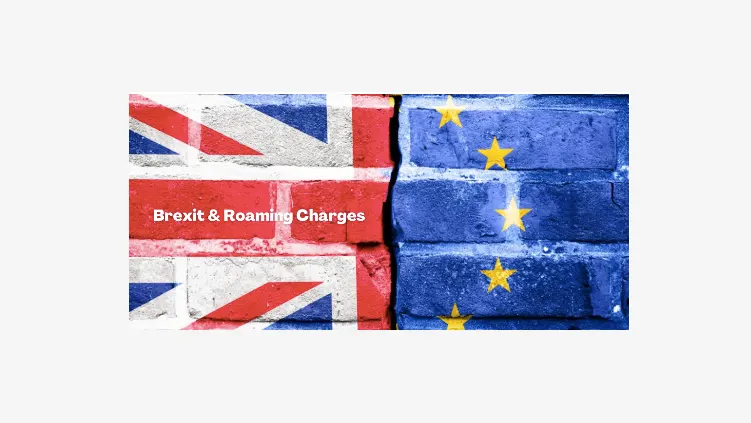Before we dive in, let’s think back to January 2020. At the time, the “Roam Like at Home” policy enabled individuals to travel within the EU under their current data plans for no extra cost.
Brexit sparked the end of that era. With the UK’s withdrawal from the EU, which officially took place on 31 January 2020, mobile operators in the UK began reintroducing roaming charges both within and outside the EU, meaning people woke up to a new reality where they were yet again at risk of high roaming costs.
Three of the “big four” mobile operators have begun reintroducing such roaming charges in the EU, including EE, Vodafone, and Three. For O2 customers, travelling within the EU is included in their “fair use” plan, where customers pay £3.5 per GB only if they exceed their allowance of 25GB. Vodafone now charges its customers up to £2 per day (not including pictures, premium calls, or premium texts) for plans initiated after 11 August 2021 and both EE and Three charge a flat fee of £2 a day for customers on monthly plans starting after 7 July 2021 and 1 October 2021, respectively. For big travellers, these seemingly small charges will begin to add up.
There is a bright side to these changes, though. Instead of worrying about the introduction of roaming charges post-Brexit, the new eSIM technology provides a simpler and cheaper option. The eSIM, or Embedded SIM, is a digital SIM card that enables individuals to use data on their devices when at home and travelling abroad. A simple QR code activation gives you access to data abroad in the same way as using a physical SIM card would.
This alternative is much more reliable than physical SIMs, as the activation process is immediate and does not come with any of the logistical issues that accompany a physical product. Not only is using an eSIM quicker and more trustworthy, but it’s also incredibly cost-efficient, particularly in comparison with the roaming charges explained above.
Based on recent studies of average data usage by travellers in July and August of 2021, it was determined that the typical traveller within Europe is most likely to use 3GB of data (available for 30 days) while travelling. To show what this means in terms of costs, below is a table that compares the costs of using an eSIM data plan through Simtex and paying for roaming charges of some of the major network providers when travelling to three popular European destinations, Italy, France, and Spain.

As you can see, Simtex’s prices are significantly less than one would have to pay for the roaming charges with most of the main networks in the UK, showing a clear advantage to Simtex and eSIM in general.
In addition to the cost savings that the eSIM technology provides, it is helpful to note the high adoption rate of eSIM compatible phones in the UK. Currently, 78% of mobile devices support the eSIM technology and that number is expected to reach 90% by 2025.
With this transition to eSIM as a cheap, quick, and reliable source of data for UK travellers comes a great opportunity for airlines. If airlines establish partnerships with eSIM businesses, they can make customers’ lives easier by providing an eSIM option as a part of their buying processes, while simultaneously increasing their own revenue. This movement is the future of travel, where eSIM will become the ultimate ancillary.
If you are interested in Simtex’s eSIM data plans and in learning more about eSIM as an ancillary service, follow us on LinkedIn and look out for our next articles and updates to see how the eSIM technology can benefit your business.



